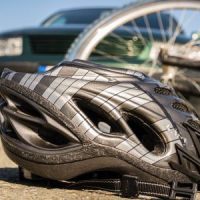Insurance Company Defenses in Bicycle Accident Cases

Most bicycle accident defenses contest two basic issues: damages or liability. Damages basically means the amount of compensation the victim is entitled to. Insurance company lawyers often claim that the victim’s injuries were exaggerated, especially if the victim doesn’t immediately seek medical treatment. But in this post, we’ll focus on liability defenses. Damages are meaningless unless a victim establishes liability.
If the tortfeasor (negligent driver) was legally responsible for injury, a Seattle personal injury lawyer can usually obtain compensation for economic losses, such as medical bills, and noneconomic losses, such as pain and suffering. These claims generally settle out of court if an attorney builds a solid liability case based on credible evidence.
Comparative Fault
This defense could apply if the victim and tortfeasor were partially at fault for an accident. In Washington, comparative fault is a two-part defense.
First, at a pretrial hearing, insurance company lawyers must convince a judge that the victim’s negligence, whether operator impairment or aggressive biking, substantially contributed to the collision.
Left-turn wrecks are a good example. Frequently, the tortfeasor is waiting to make an unprotected left turn against traffic, usually at a stoplight or while pulling out of a private driveway. Frequently, tortfeasors don’t obey a basic rule of the road, stopping and looking both ways, in these situations.
As a result, the tortfeasor turns directly in front of an oncoming bicycle. These crashes often cause catastrophic (life-threatening) injuries, because the tortfeasor is traveling at or near top speed at the moment of impact.
Usually, insurance company lawyers argue that the victim should have changed lanes or speeds to avoid the wreck. However, such sudden, evasive maneuvers are usually impossible on bicycles. Two-wheel vehicles are much more unstable than four-wheel vehicles.
In the unlikely event the judge agrees that the victim substantially contributed to the wreck, an insurance company lawyer must make the same pitch to jurors. This time, the jurors must divide fault on a percentage basis.
Washington is a pure comparative fault state. The victim is entitled to a proportionate share of compensation, even if s/he was 99 percent responsible for the wreck.
Lack of Evidence
This defense isn’t very effective in Washington. The burden of proof is only a preponderance of the evidence (more likely than not).
The victim and tortfeasor almost always have different recollections. This doesn’t mean one person is lying. Our minds recall things selectively.
Because the burden of proof is so low, a little additional evidence, such as a favorable witness statement or police accident report, usually suffices.
The Helmet Defense
This defense is basically a failure to wear a helmet, whether or not one is legally required. This defense is very effective in some states, but it usually backfires in Washington.
Generally, evidence of helmet non-use is inadmissible in a Washington civil action. Even if insurance company lawyers find a loophole, the evidence that bicycle helmets reduce head injuries is weak, at best.
Most bicycle helmets aren’t much thicker than styrofoam cups. Additionally, they only protect some of the head. Finally, teh insurance company must prove that the failure to wear a helmet, as opposed to the tortfeasor’s negligence, substantially caused the victim’s injury.
Work With a Dedicated King County Lawyer
Common bicycle crash defenses are usually ineffective in Washington. For a free consultation with an experienced personal injury lawyer in Seattle, contact the Emerald Law Group. After-hours visits are available.
